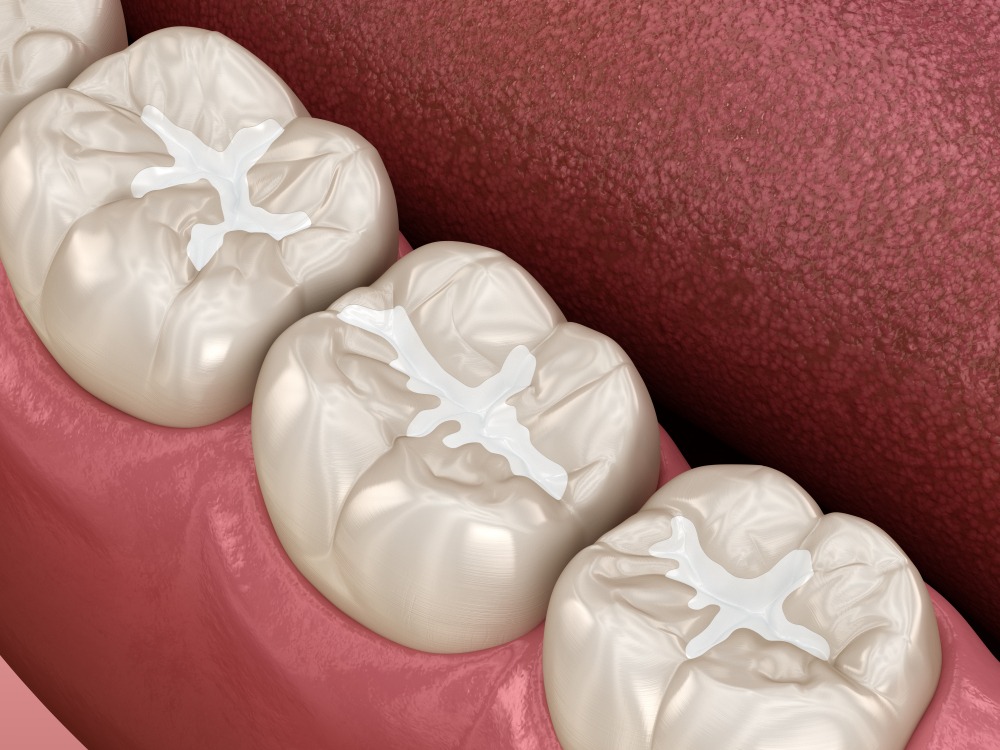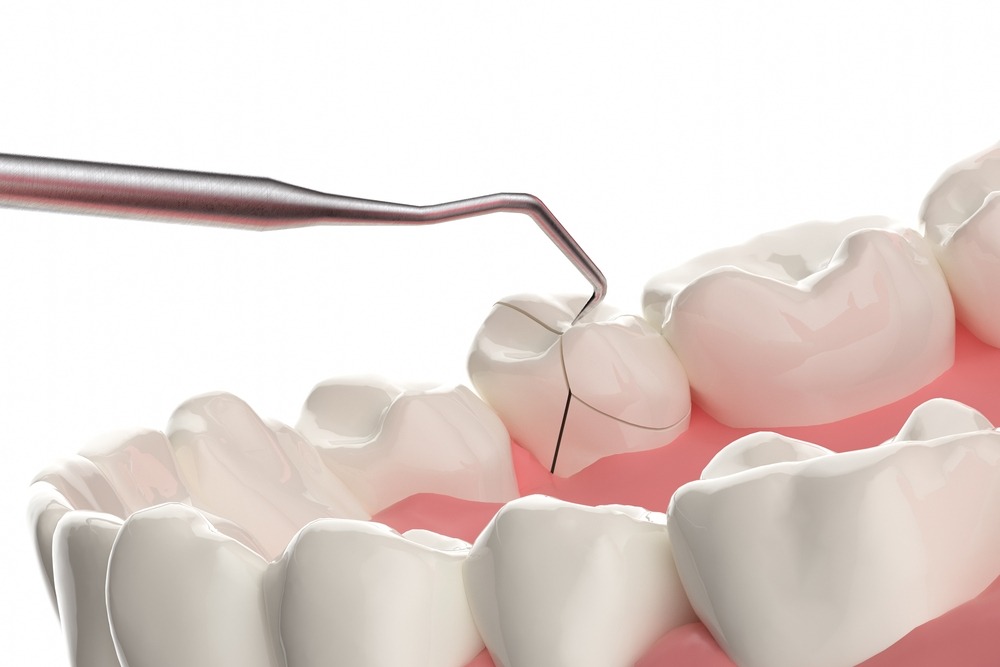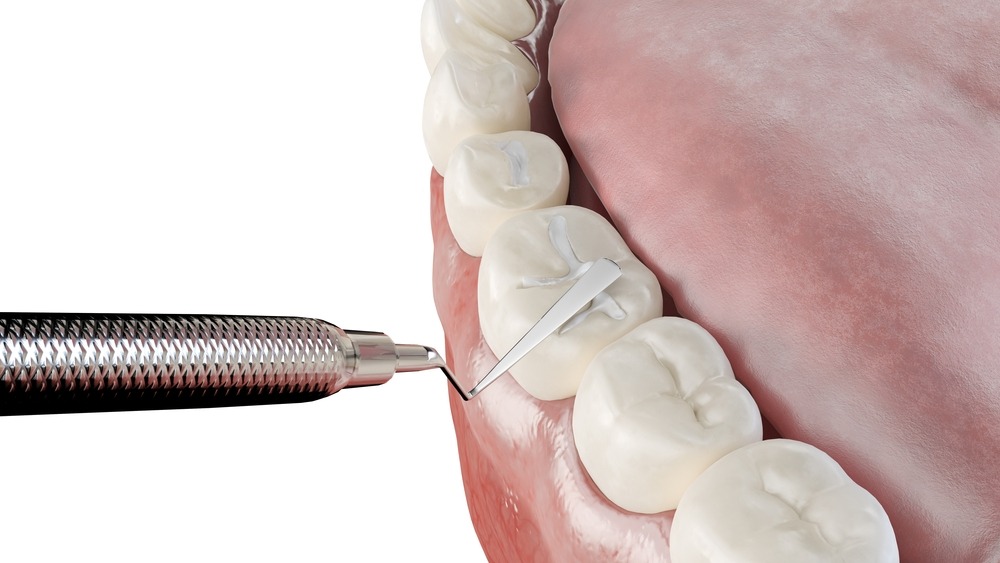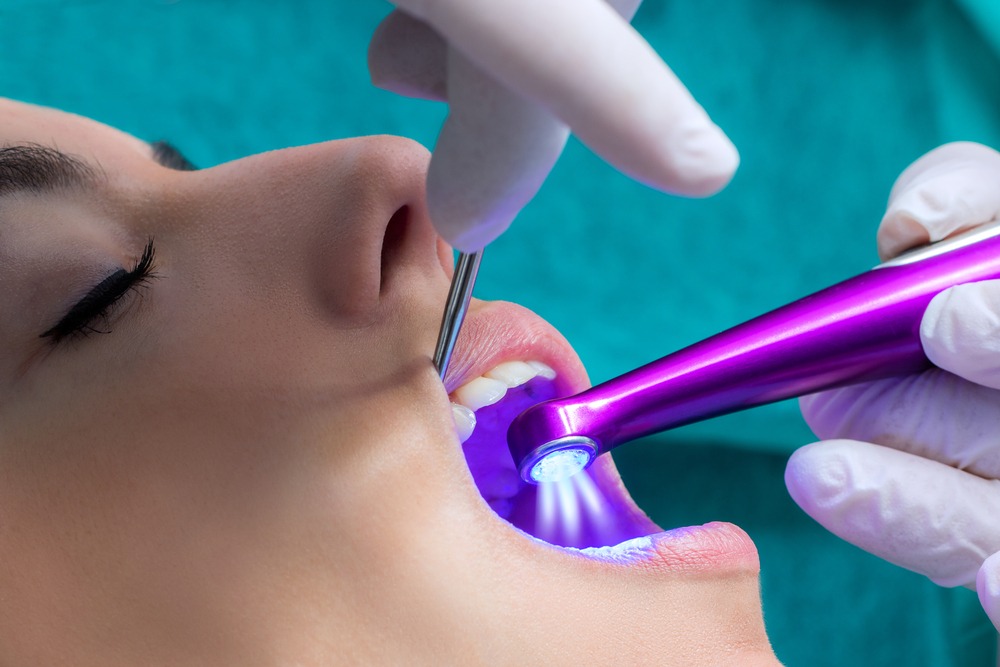
A dental crack can lead to the loss of your tooth. We tell you what to do if you have a crack in your teeth and how to treat it.
Dental fissure: how to act and treat it correctly
A dental fissure can be caused by chewing something very hard, by grinding the teeth or by the aging of the body itself. In some cases it causes discomfort and sometimes it goes unnoticed.
Although this type of injury to the teeth is less talked about, it is quite common. In fact, they affect 40% of the population and equally men and women. The age range most affected is usually between 30 and 60 years of age.
Dental fissure is one of the main causes of tooth loss in industrialized countries. But don’t panic; there are treatments that help cracked teeth to remain in the mouth. We tell you all about it.
What is a dental fissure?

We call a dental fissure a crack without detachment in the tooth structure. It is an indentation that opens up on the surface of the tooth.
This lack of continuity in the elements can go unnoticed, especially when it only involves the enamel. In these cases, it is usually found by the dentist during dental check-ups. But other times, the dental fissure causes different complications, such as sensitivity, infections or even the loss of the tooth.
There is a condition known as cracked tooth syndrome, a pathology characterized by the appearance of pain when chewing caused by the presence of a crack. Because it is a very small crack and the patient has no history of previous lesions, it is difficult to detect and diagnose.
Age is an important factor in the appearance of these conditions. As we mentioned, it usually occurs in people over 30 years of age, especially after the age of 50.
However, age is not the only element to consider. They can also occur in young people. Let us see in detail its causes.
Causes of dental fissure
There are several situations in the mouth that can favor the appearance of a dental fissure. These are the most frequent:
- Bruxism: clenching and grinding of the teeth weakens them, making them more susceptible to cracks. In addition, the excessive force of this habit is enough to generate spontaneous cracks on the surfaces. This is especially true for molars.
- Large fillings that weaken the integrity of the tooth.
- Biting or chewing very hard foods, such as nuts, ice or candy.
- Trauma: a blow to the mouth can damage the integrity of the tooth. Traffic accidents, a fall, sports injuries or fights are some situations that favor this type of trauma to the teeth.
- Abrupt changes in the temperature of the mouth: for example, when eating something very hot and then trying to cool the mouth by drinking something cold.
- Teeth with root canals: teeth with root canals, lacking vitality due to lack of pulp, become dehydrated over time. These structural changes weaken the endodontic elements, increasing the risk of cracking when biting into something a little harder than usual.
- Teeth with temporary fillings: while waiting for the dental laboratory to fabricate a definitive restoration, such as bridges or crowns, the teeth are covered with temporary pastes. When biting down hard on something with these fillings, the teeth can crack, especially if they have a previous root canal. In these cases, root cracks are the most common.
- When removing a pin: when removing a pin from the inside of the tooth, this can cause cracks in the root zone, which is already weakened by the previous treatment.
Types of dental fissure
A dental fissure will be more or less serious depending on the dental tissues involved, the areas of the tooth affected and its direction. It is important to differentiate the complexity of the crack in the tooth because, depending on the type of lesion, treatments are chosen to solve the problem.
On the one hand, according to the tissues involved and the magnitude of the problem, we can distinguish these two types:
- Superficial dental fissure: only affects the enamel and does not cause pain or discomfort to the patient. In general, it does not require treatment, although it is sometimes preferred to seal them to prevent the filtration of pathogenic bacteria.
- Deep dental fissures: Deep fissures are those that extend beyond the enamel, involving the dentin and even the pulp. They cause pain and other discomfort, so different treatments will be necessary to reverse the situation. If the crack extends below the gum line, it is usually necessary to extract the tooth.
As we said, there are also other types of classifications. Depending on the area of the tooth affected we can distinguish cracks in the crown, in the root or in both parts.
The shape and direction of the fissure is also important, especially during the etiological diagnosis and when focusing the treatment. Thus, we can classify cracks as horizontal, vertical or oblique.
Symptoms of dental fissure

Some types of dental fissure do not produce symptoms and can go unnoticed. Especially when they are superficial lesions in the enamel.
At other times, cracks in the teeth can cause various types of discomfort. The deeper and more extensive the crack, the greater the symptoms. However, the sensations vary from patient to patient.
Acute but discontinuous discomfort, which comes and goes, is one of the common manifestations of these conditions. Pain when chewing or biting, especially when releasing the bite, is also characteristic.
The pressure of chewing separates the fragments of the fissure, generating pain. Then, when relaxing the bite, the crack closes again quickly, causing a new sharp and very uncomfortable sensation.
Sensitivity to heat, cold and sweets is another discomfort associated with dental fissure. Swelling and inflammation of the gum surrounding the painful tooth is also quite common. Finally, in some more obvious cases, it is possible to see and notice the crack on the surface of the tooth.
How is a cracked tooth diagnosed?
If you present some of the symptoms mentioned above, you may have a cracked tooth. The best thing to do in this case is to see a dentist for an evaluation.
To reach an accurate diagnosis of a dental fissure it will always be necessary to go to the dentist. The dentist has several resources, although many times, detecting the disorder can be difficult.
First, the dentist will ask questions about the medical history, habits and situations that could be associated with a cracked tooth. If there is a history of a blow to the area, if you chew very hard foods on a regular basis or if you suffer from bruxism, are some of the inquiries that can provide guidance.
Once in the dental chair, the dentist observes the tooth thoroughly, using good lighting and even a magnifying glass. You can also pass a dental explorer on and around the tooth to perceive irregularities or edges that get caught in the instruments.
The use of dental stains or dental developers is also useful. These pigmented liquids run down the fissure, making it visible.
Gingival probing is a maneuver to look for gingival inflammation and to identify vertical cracks that could be causing it. X-rays are not able to reveal small fissures. However, the dentist may use this type of study to look for other associated problems.
Treatments for dental fissures
Once the dentist diagnoses the dental fissure, he/she can plan the most appropriate treatment for each case. The procedure to be performed depends on several factors:
- The location of the crack.
- The size of the lesion.
- The tissues involved.
- Whether or not it extends below the gum line.
- If the patient presents associated symptoms.
Based on these data, the dentist may resort to some of the following procedures:
- No treatment: in tiny cracks on the enamel, which do not affect the appearance or cause pain, it may be advisable not to touch them and only perform periodic checks.
- Polishing: when the cracks are not very deep, the tooth surface can be polished.
- Sealing: in the case of shallow cracks in the enamel, a sealant is applied, which is a fluid resin that runs through the crack and fills it. This prevents bacteria from seeping into deeper areas.
- Fillings: when the crack is more extensive, it is restored and filled with plastic resins that restore the function and esthetics of the tooth.
- Crowns: crowns are the solution to solve cases of very extensive cracks that compromise a large part of the dental crown. They are also used to rehabilitate teeth that have undergone root canal treatment.
- Endodontics: if the dental fissure reaches or affects the pulp, it will be necessary to perform an endodontics. With this procedure the internal tissue of the tooth is removed, the space is sealed with special materials and then the tooth is restored to recover the lost anatomy.
- Extraction: when the fissure is very extensive, affects the root zone or compromises other neighboring structures, tooth extraction will be necessary. Then prosthetic alternatives will be sought to restore the smile.
What to do if you suspect you have a dental fissure?
If you have hit your mouth, have bruxism or have felt something strange in your teeth when biting on very hard food, you may suspect a dental fissure. If you feel tooth pain when biting or very hot or cold drinks cause discomfort, it may also be due to a crack.
In these cases, the ideal is to visit the dentist as soon as possible to confirm the diagnosis and seek a prompt solution. In any case, until you can attend, there are some precautions that will help you to reduce the discomfort and not worsen the problem.
A very useful tip is to avoid chewing on the side where you suspect the fissure is. In addition, the ideal is to eat soft and easy to eat foods that do not require much chewing effort.
If the pain becomes very intense, ask your dentist about the possibility of using an over-the-counter analgesic until you can visit him/her in the office. Remember never to self-medicate, as you could compromise your health.
Complications of a cracked tooth

A cracked tooth that is not treated in a timely manner can cause secondary caries, irritate the dental pulp or fracture the element. With this, the tooth can be completely lost.
Cracks can also become complicated, causing infections. They can spread to the bone, gums and, in the most serious cases, to other areas of the body.
If you feel tooth sensitivity to cold or heat, a lot of pain when chewing, your gums swell, you have bad breath and bad taste in your mouth, or you have an enlarged neck or face, you should see your dentist urgently. Also if you have fever, palpitations or difficulty swallowing, speaking or breathing.
These symptoms indicate an infection in the mouth that should be treated immediately to avoid more serious consequences. Your dentist will seek to drain the pus from the process and prescribe antibiotics.
Prevention of dental fissures
The best way to treat dental fissures is to prevent them. While sometimes it may not be possible, you should know that with some simple practices it is possible to preserve the integrity of your teeth.
Healthy, strong teeth are less likely to crack. For this reason, a good way is to practice proper dental hygiene.
Brushing your teeth twice a day with fluoride toothpaste, flossing daily and eating a healthy diet help keep your teeth healthy. Visiting the dentist every 6 months for preventive care and damage control is also important.
In addition, to protect the hard tissues of your teeth and prevent them from cracking, it is advisable to avoid chewing hard foods. If you practice high-risk sports, you should wear a mouth guard and, if you suffer from bruxism, mouth guards will protect your teeth.
Finally, if you notice any symptoms that make you suspect you may have a dental fissure, do not overlook it. Cracks in the teeth are quite common and the sooner they are treated, the less risk of complications.
Visit your trusted dentist. As we told you, there are a variety of procedures available to save your tooth and its appearance.
Warning !
We don’t give any medical advice, diagnosis, or treatment. Consult with your physician or seek medical attention before making any health or food-related decisions.
This article is about some simple general health or food tips that you can find everywhere on the internet, not about some deep professional advice.




















